Scottish Sojourn: Perthshire, Argyll and the Isle of Mull
This is the sequel to my first Scottish Sojourn post about Abbotsford and various highlights in the Kingdom of Fife. I'm aiming to summarise the rest of my trip with mum in one more post… but... haha! There’s just so much content. As previously stated, I want to capture this incredible itinerary – perhaps inspire one or two of you to follow in our footsteps – as well as record some special moments on the blockchain for my own future reflection. The places we visited were recommended by locals, colleagues, and Peter Irvine’s book “Scotland the Best” – a must-have guide if you’re planning a trip here. Irvine’s book became a trusted travel companion and I couldn’t recommend it more.
I suppose we’ll start where we left off - moving from the Kingdom of Fife into Perthshire.
Scone Palace: known as a 'great house', Scone Palace is the ancestral home of the Earl of Mansfield, boasting magnificent grounds. (For your information “Scone” is pronounced like "skoon" (rhyming with "moon" or "soon")). It is famous for the Stone of Scone (also known as the Stone of Destiny), upon which the kings of Scots were crowned – including Macbeth and Robert the Bruce. For those who don’t know, legend says the Stone was brought from Ireland and used in the coronation of Scottish kings at Scone Abbey. Taken by King Edward I of England in 1296 during his conquest of Scotland, it was placed under the Coronation Chair at Westminster Abbey, where English monarchs were crowned. In 1950, Scottish nationalists removed it from Westminster Abbey, sparking a search and subsequent return. The 2008 film “The Stone of Destiny”, starring Charlie Cox, Kate Mara and Billy Boyd, captures the story in a quirky light-hearted way. Finally, in 1996, the Stone was officially returned to Scotland and now rests in Edinburgh Castle, symbolizing Scottish sovereignty and enduring national identity. Scone also features the Queen Vic bedroom, a maze, and a pinetum. The palace is home to many friendly animals, including numerous peacocks.
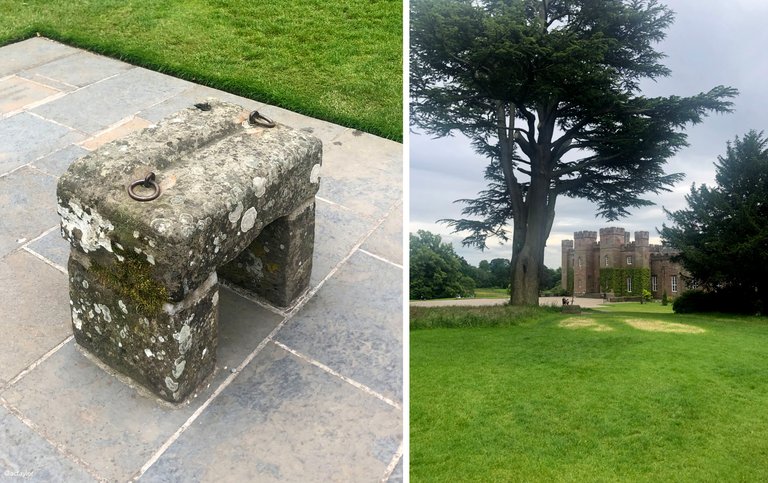
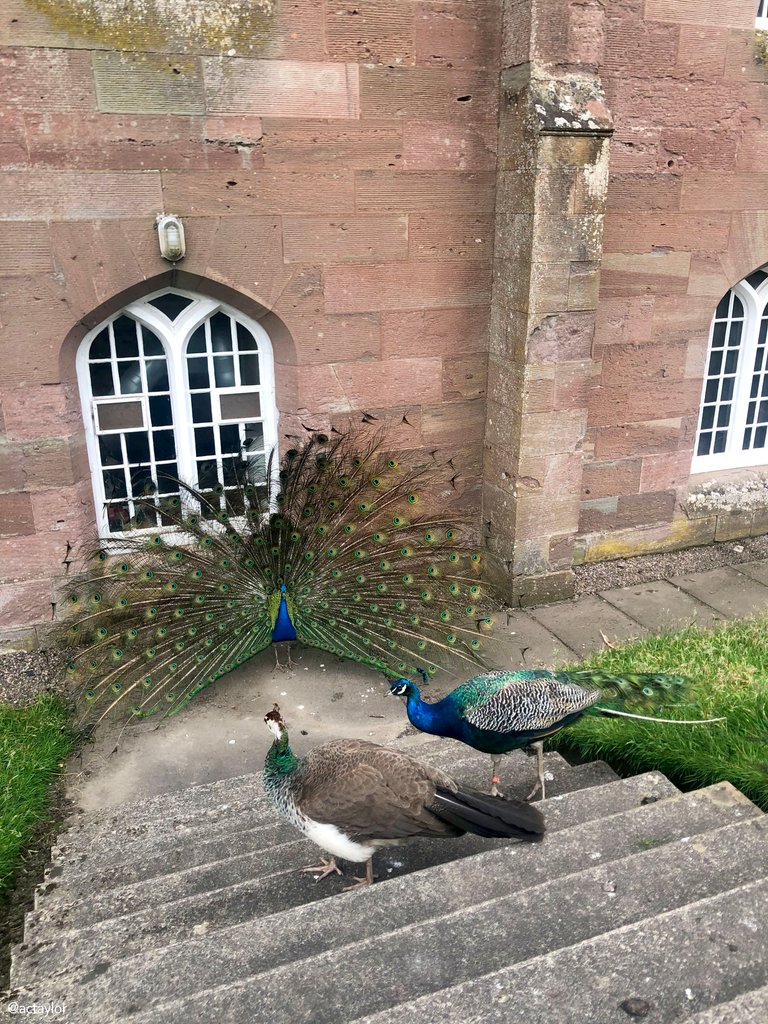
The Crannog Centre: located on the southern shore of Loch Tay, the Crannog Centre offers a pretty fascinating reconstruction of an Iron Age dwelling. The site features several submerged structures under the loch, making it an engaging archaeological project. 2,500 years ago, many people across Scotland lived in Iron Age loch-dwellings known as "Crannogs." 17 such crannogs have been discovered in the murky waters of Loch Tay. Since 1980, these ancient structures have been the subject of extensive exploration. In 1997 a detailed replica based on excavation findings was constructed. It became the centrepiece of the Scottish Crannog Centre. (Note: this leaves much up to interpretation… we endurd some stimulating guesswork over what the brown, sludgy matter found at the base of a wooden sieve-like instrument was, for example…) In any case, this reconstruction burnt down in 2021, but a bigger – and better – version opened up to the public in April this year. It's particularly ideal for children, with interactive displays and costumed interpreters.
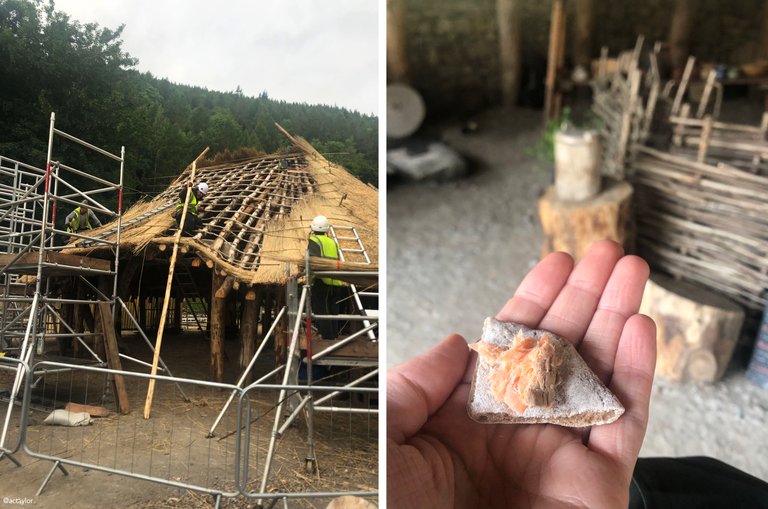

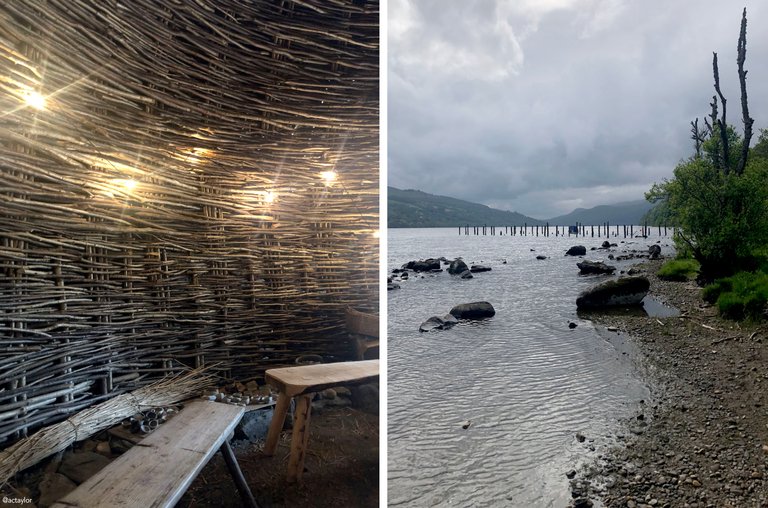
One quiet and off-the-beaten-track addition to anyone’s trip, especially if you’re visiting this part of Scotland, is seeing the Fortingall Yew. The Fortingall Yew, situated in the heart of Scotland at Fortingall churchyard, is estimated to be between 3,000 and 9,000 years old and holds significant ties to early Christianity in Scotland. It is considered one of Europe's oldest living entities. Ella McKendrick has written a nice summary of the Yew. It was quite spectacular to visit it – an strange feeling being in the presence of something that has seen so much history roll by. It is as old as Stonehenge, the Roman and Viking invasions, the fight for Scottish Independence, the Battle of Culloden, Industrialisation, both World Wars, to name but a few. The sheer scale of history that The Fortingall Yew has survived is almost impossible to fully comprehend.
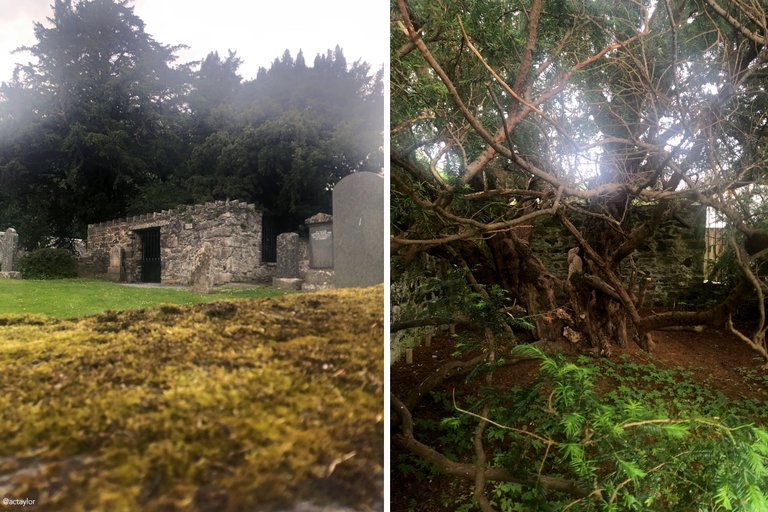
The Hermitage in Dunkeld: if you’d like to check out for a brief few hours, do walk through the towering Douglas firs to the folly of Osian’s Hall and gaze over the falls at The Hermitage. We followed an easygoing walk along the glen and gorge of the River Braan, canopied by the tallest trees in Britain. Further up the path you can find a pavilion overlooking picturesque falls and, even further along, Ossian’s Cave. We made it to the picturesque Rumbling Bridge spanning a deep gorge and excellent swimming spots [according to the heads bobbing in the pools below], before turning back. Built in the 18th century, the Rumbling Bridge was part of the Duke of Atholl's grand vision for The Hermitage. The bridge provides a perfect vantage point to observe the stunning Black Linn Falls, where the River Braan tumbles over rocky ledges into the deep pool below. It’s worth the visit and I only wish I’d spent a longer time there. But I felt this way about many of the places we visited, right enough…
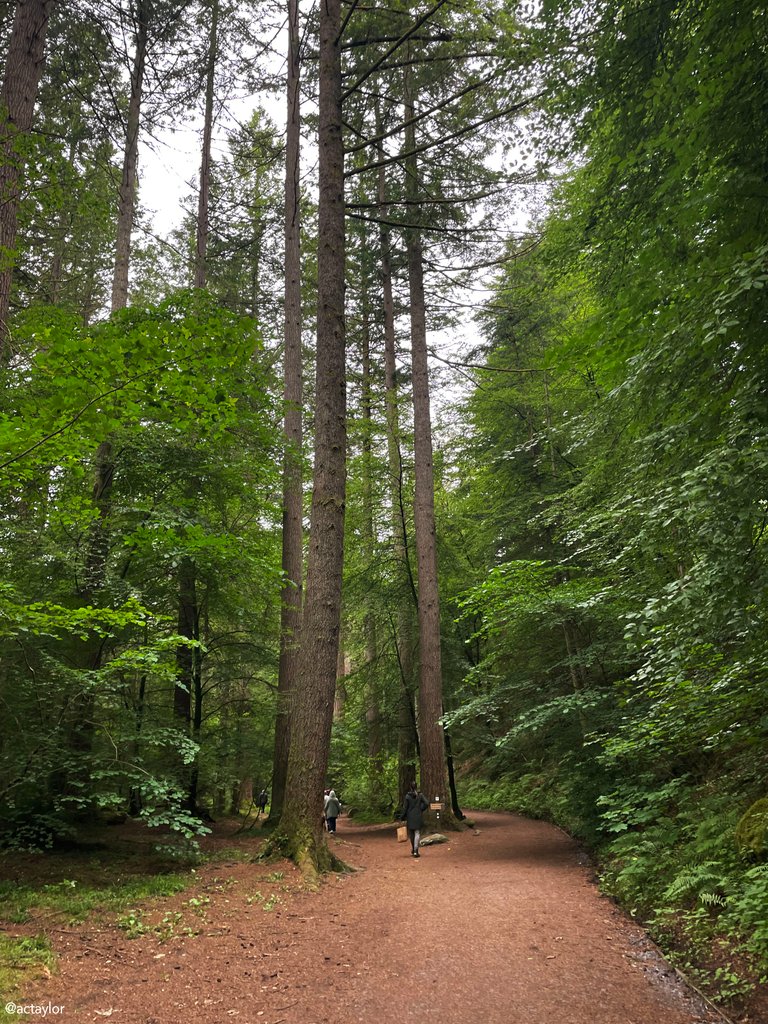
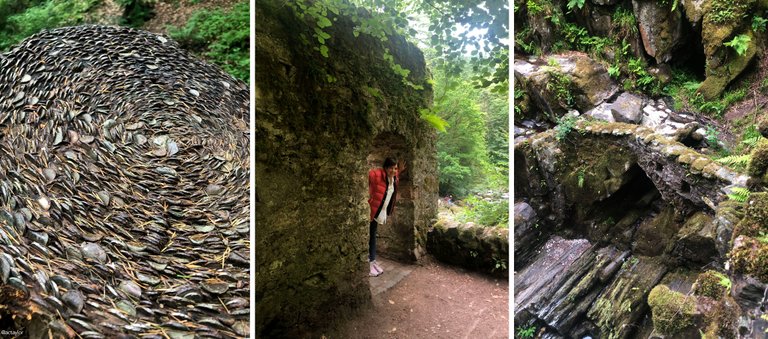
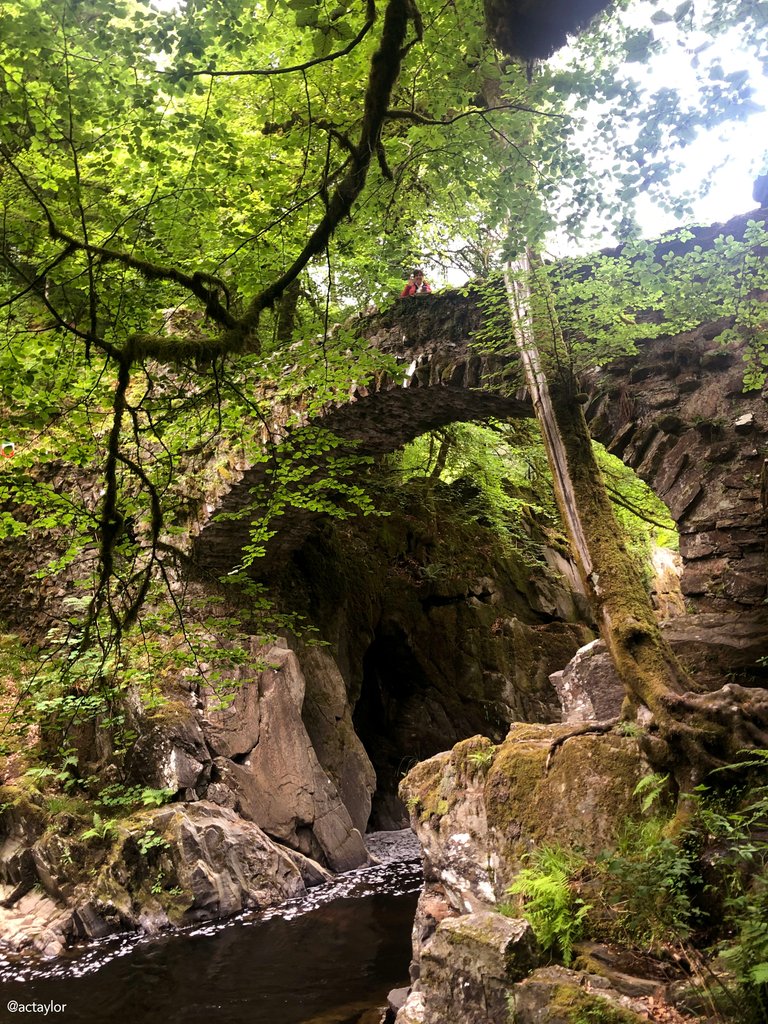
Argyll and the Isles
In Oban, I’d recommend visiting the Hinba Coffee Roasters and take the old railway walk up to Dunollie Castle. The castle, now part of a historic attraction, offers stunning views of the bay, Lorn, and Lismore, and is surrounded by woodlands. We encountered a doggo on our leisurely hike up the mountain. He was deeply engrossed in his ball, but when I threw it, he just gave me a blank look that said, "You expect me to fetch that?" Clearly not the sharpest…
Talking of dogs… There’s a large rock nestled between Dunollie Castle and the centre of Oban known as the Dogstone or Fingal's Dogstone. Many believed that this is where the giant, Finn the Fingal of MacPherson, left his dog Bran when he went off hunting across the Hebridean islands. Some have said that you can see the marks from the dog's chain where it circled and circled the stone, trying to break free. A notice board on the walk quoted James Macpherson's description of Fingal's dog Bran, quite a beastie;
“With horses breath, with depth of chest,
With breadth of loin and curve in groin
And nape set far behind the head –
Such were the dogs that Fingal bred”
Following the description of Bran, the poem continues –
"Call” said Fingal, “call to the chase,
Dogs slim and choice in traveling the moor
Call Bran of the whitest chest;
Call Neart and Ciar and Luath;
Fillan, Rymo – he is in his grave,
My son is in the sleep of death.
Fillan and Fergus blow the horn;
Let joy arise on hill and cairn,
Let deer start up in Cromla
And by the Lake of roes – their home;
The shrill sound rang throughout the wood;
A thousand dogs sprang over the heath;
A deer fell down to every dog;
Three fell to Bran alone;
And towards Fionn he turned the three
To give great joy to the king”.
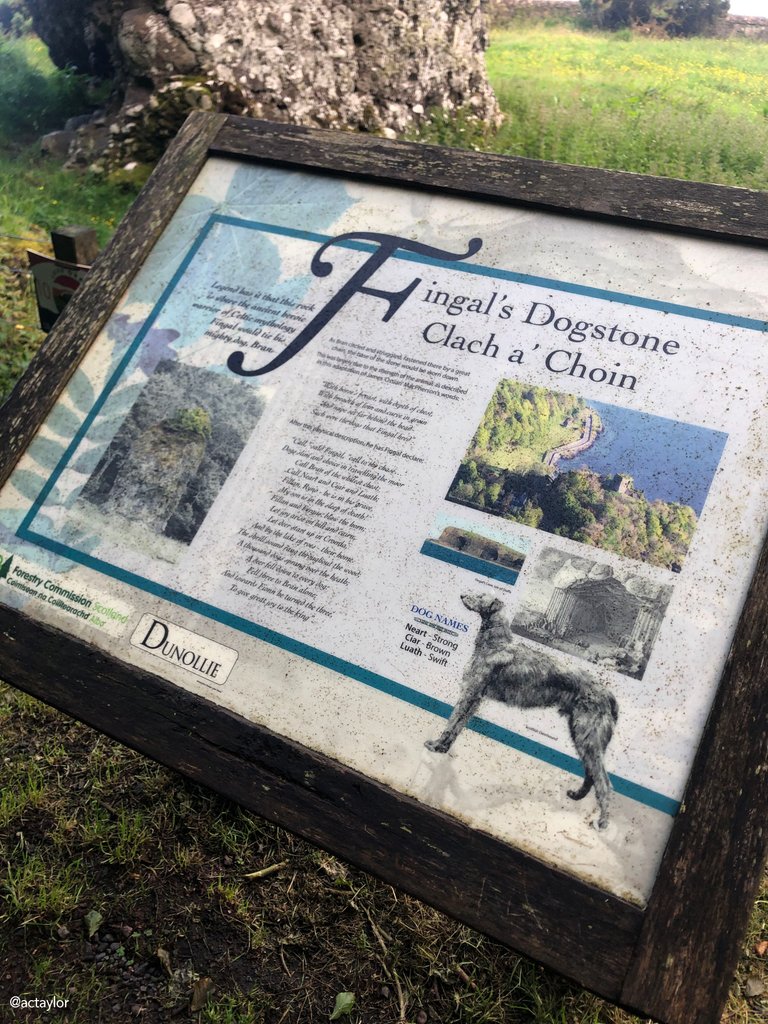
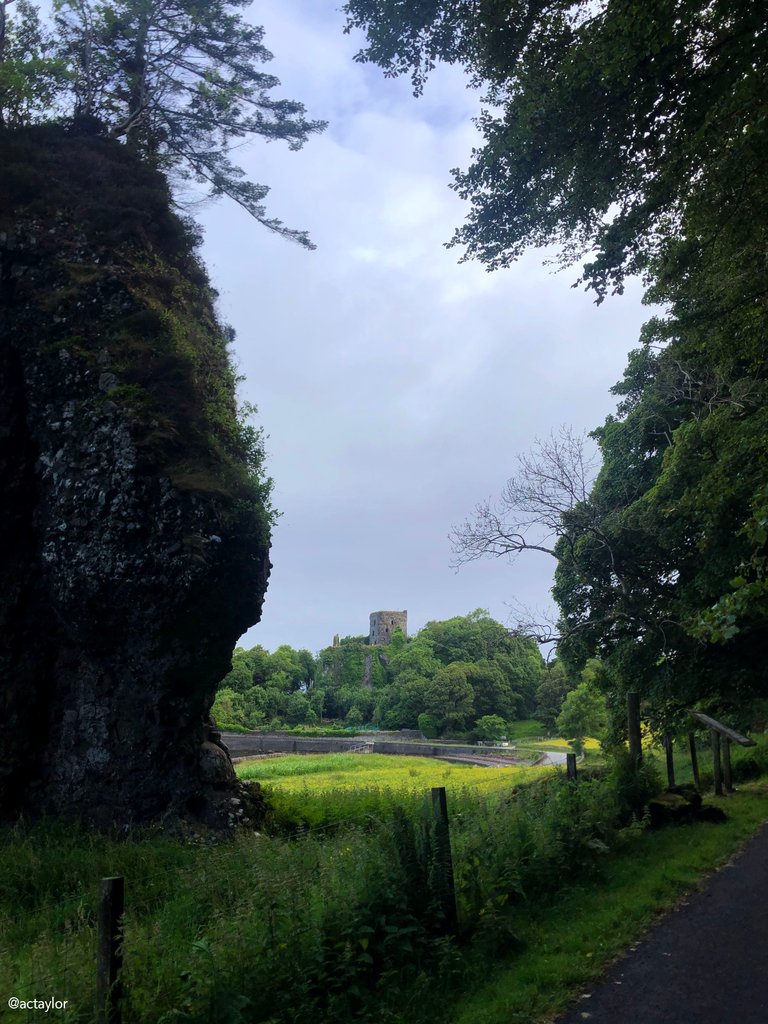
Now, Isle of Mull. The Isle of Mull is located in the Inner Hebrides, off the west coast of mainland Scotland. It lies within the Argyll and Bute council area and is the second largest island in the Inner Hebrides, after Skye. Mull is easily accessible by ferry from the town of Oban on the mainland, and this is where we departed from. I’ll post a screenshot of the route we took below, aboard the Caledonian McBrayne ferry.
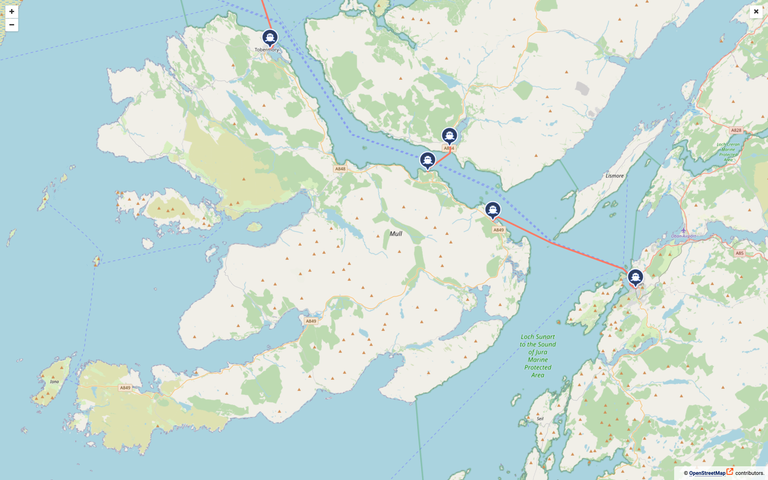 (Route: Oban to Craigmure (first stop))
(Route: Oban to Craigmure (first stop))

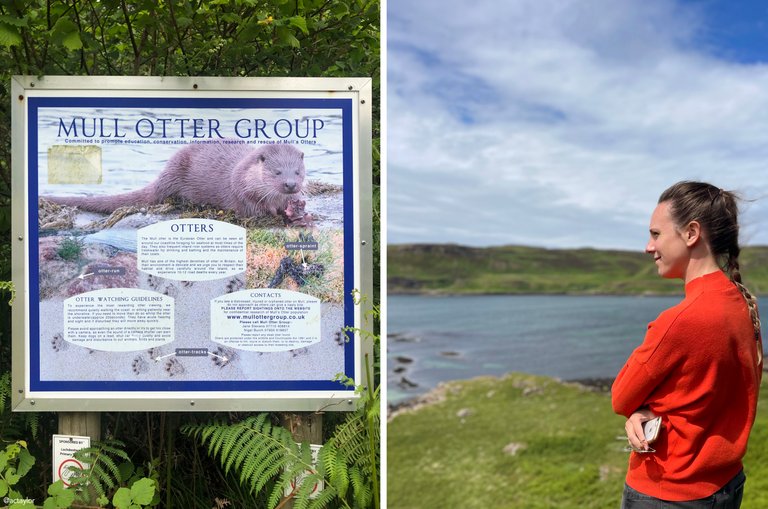
** Important! Try to book your ferry tickets weeks, if not months, in advance (£24.50 for two people and a car). One of the aforementioned German friends missed booking a slot on the ferry to Skye. As she had accommodation booked on the Isle, she had to drive her car the extra distance in order to cross over the bridge in the far north - adding mileage to her hired car. However, there really is only one way to visit the Inner and Outer Hebrides… aboard a boat. And if you haven’t bought your ticket… well then. "Yer bum's oot the windae".
It cost £24.50 to book two people and a car.
I found the main hubs in Mull very busy – not overly so, but then we did beat the school holidays by a week. It didn’t take much time to realise just why it’s such a popular destination for visitors looking to explore stunning landscapes, rich wildlife, and charming villages like Tobermory. However, outside of the main hubs... well:
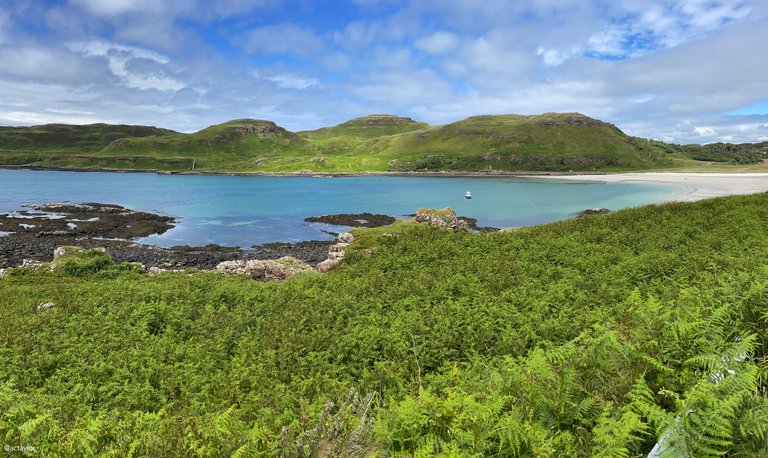
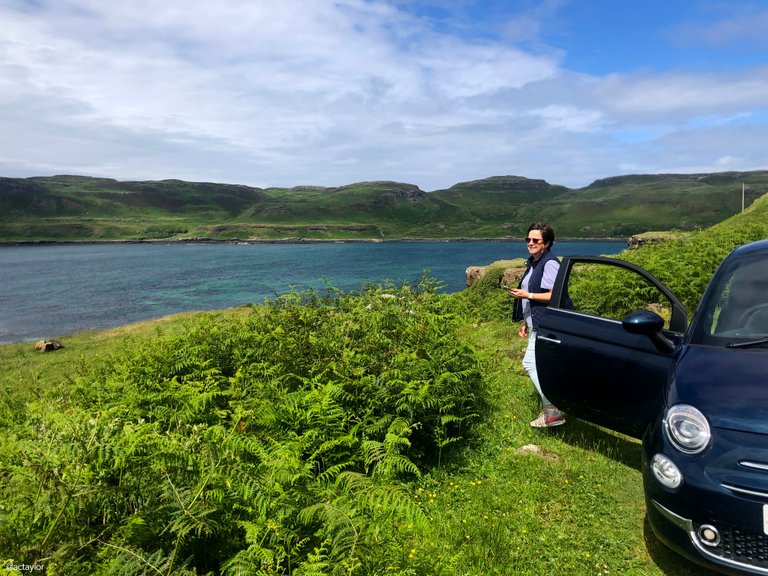
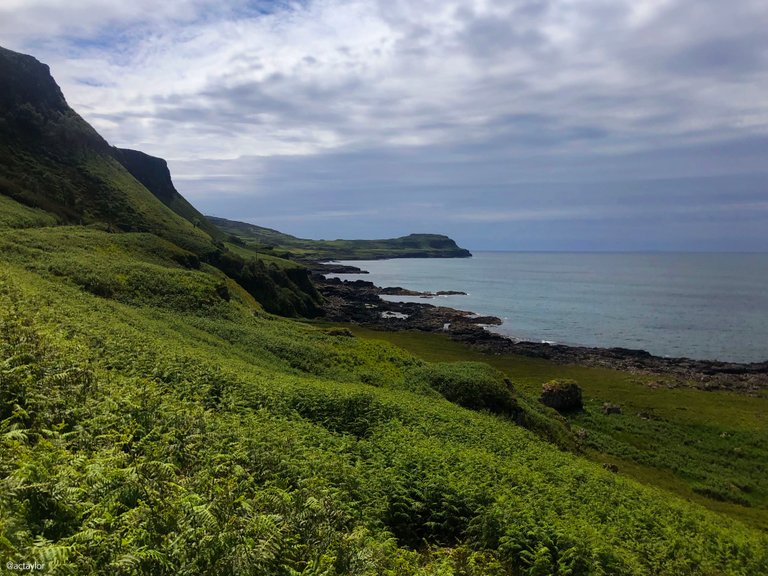
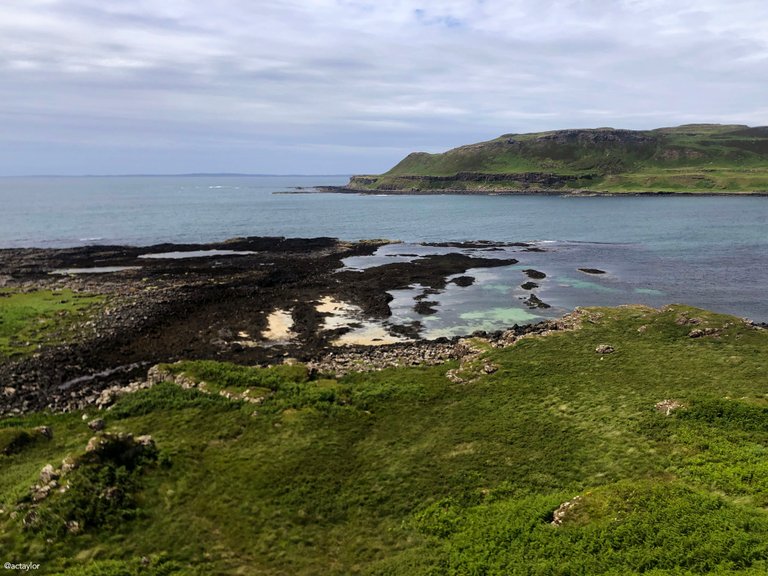
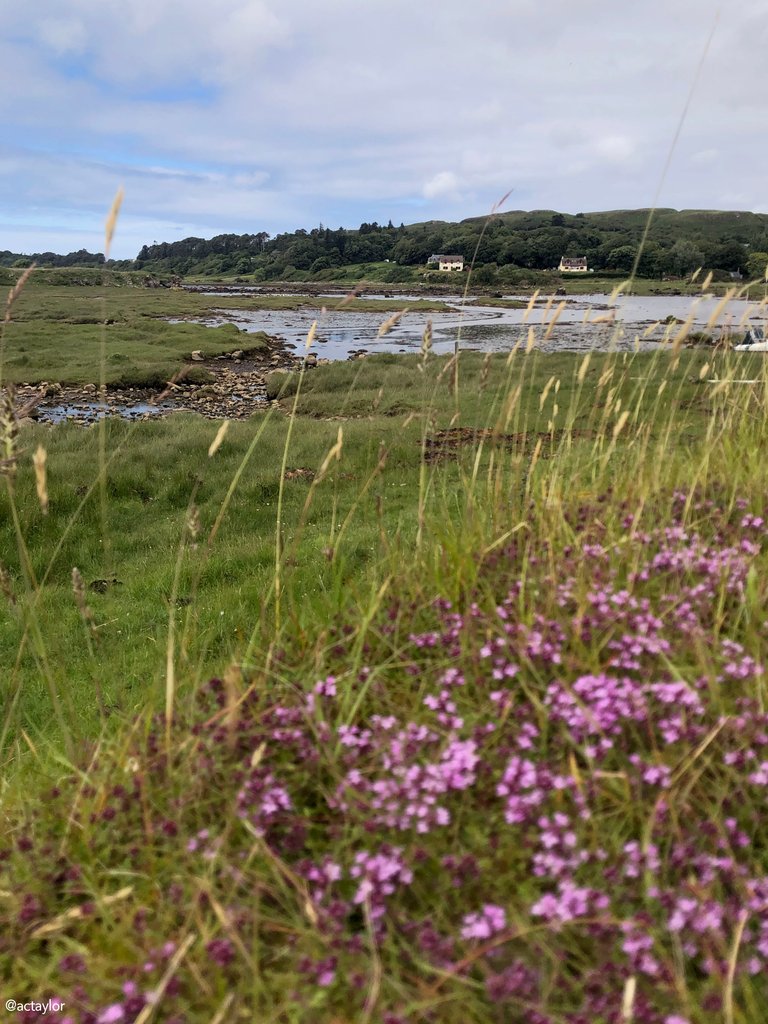
The surrounding scenery of Mull is nothing short of spectacular, really. Rugged cliffs and sweeping moorlands give way to pristine sandy beaches and hidden coves, where the turquoise waters invite you to explore. Lush forests and rolling hills. Mum swore she saw an otter, and the local inhabitants—aka the coos and sheep—kept us thoroughly entertained along the road. That is, until two wandering calves decided the road was theirs and ignored our exasperated attempts to shoo them away. Word to the wise: factor in a few extra hours for winding roads and belligerent animals. Here’s a fact: Mull also boasts the successful reintroduction of the sea eagle and has the highest breeding density of golden eagles in Europe.
Tobermory, the island's postcard-perfect village, with its painted houses around the bay. You really can’t trip to Mull without seeing Tobermory. Tobermory Bakery: in the middle of the postcard houses and shops around Tobermory Bay. This is very much the Island Bakery. I don’t normally eat fish – or any kind of meat for that matter – but Mull is known for its fresh seafood and scenic dining. In fact, Johnny’s boat on the quayside supplies a lot of the local shops with primarily shellfish, arriving at around 16:00 every day. They stocks are wheeched upstairs. All else is properly sourced (they close in winter, partly because supplies cannot be guaranteed) and “the only thing frozen are our fishermen”. We ate at Hook’d… because: when in Rome. I may not be the best judge of fish, but I can’t imagine it gets much better than this. Bright, bustling, outlook on the dock.
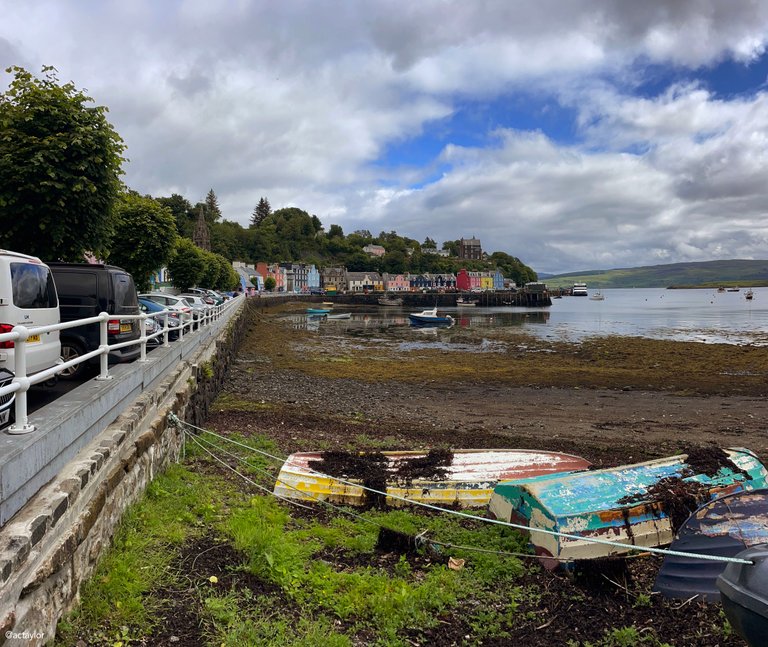
The Glass Barn at Sgriob-Raudh Farm near Tobermory, operated by the Reade family, turns thousands of litres of milk into the famous Mull cheddar and Hebridean Blue cheese. Very cool tearoom/café – we stocked up on different cheeses here for the rest of our journey. And the boho barn and tearoom/café are delightful. The Glass Barn: scrumptious.
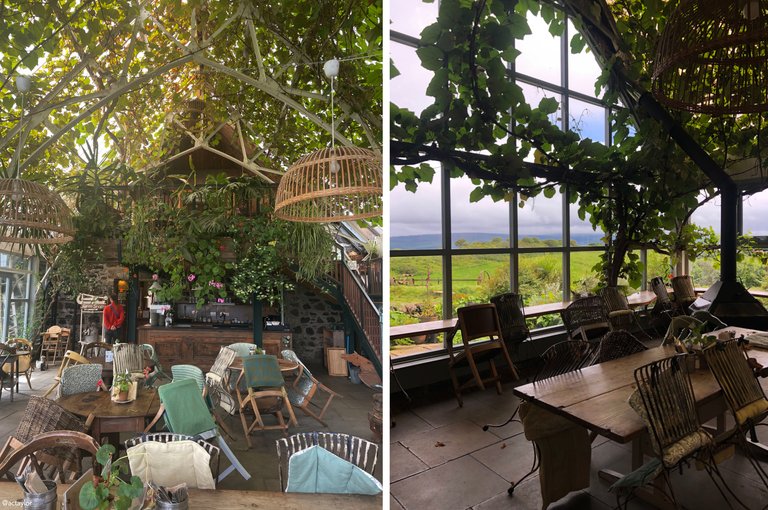
I think it was around this point in our journey that mum found herself humming along to songs she’d learnt as a child… One song she introduced me to was a rather horrific one. Hahaha. I mentioned Billy Connolly before – his tunes are a right laugh. But if you want a classic, very much outdated folk song, then you’re in for a bit of luck because I’m going to share with you one that absolutely tops the charts. It’s called "Wee Cooper o’ Fife". Despite having learnt it in childhood, it is not typically considered a children's song due to its themes and content – which, as you will find out, include references that are more suited for adult audiences. It's more of a traditional folk song that some might enjoy for its historical and cultural significance – originating in the 18th Century, passed down orally and sung in social gatherings, taverns, and communal settings. In a nutshell, it’s a cheeky old song about a barrel-maker who finds himself with a delicate wife who prefers to delegate the responsibility of earning a living to her husband, allowing her to lead a more leisurely life… (This aspect of the song reflects traditional gender roles and attitudes towards work and domestic responsibilities that were prevalent in the time and culture the song originates from.) Today it serves as a humorous commentary on marital dynamics and societal expectations from a bygone era.
So, we were listening to silly songs like this – alongside other hilarious classics like If It Wasnae for Your Wellies, Donald Where’s Your Troosers and Dundee Weaver. The more tempered, peaceful folk songs also featured, of course – a lot of the Corries, such as the Bonnie Lass of Fyvie and The Roses o’ Prince Charlie. It made waiting for herds of cattle and sheep depart the road all the more bearable.
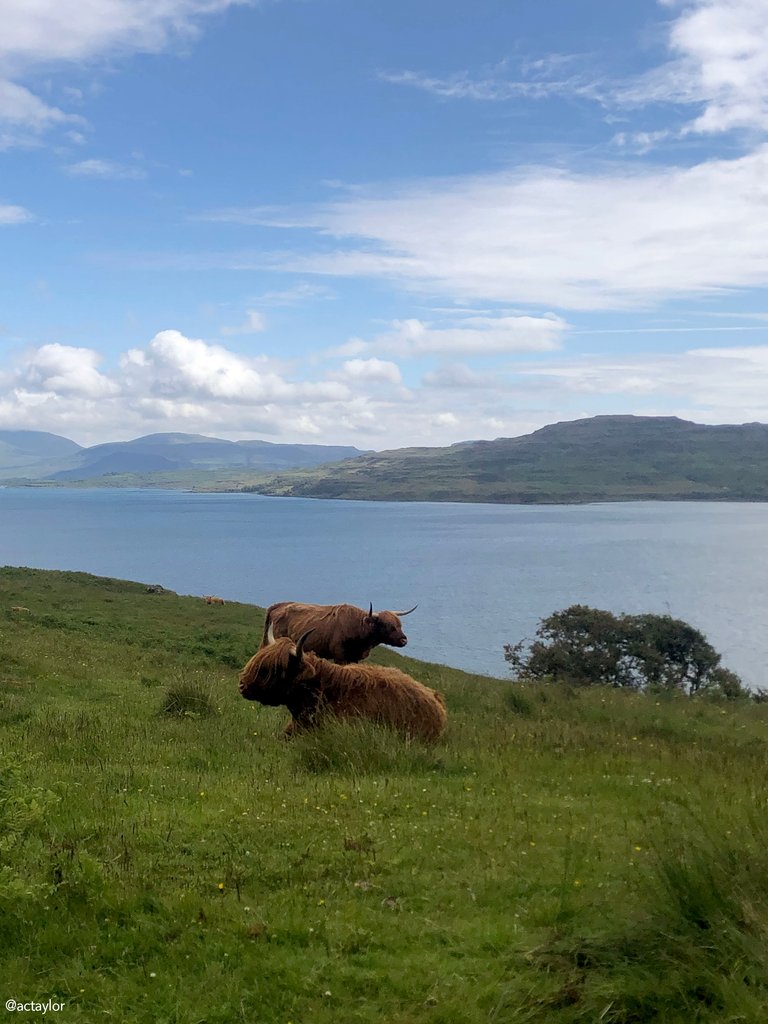
Rounding Frachadil into Calgary Bay was a surreal site to see. Stopped briefly at the Calgary Art and Nature Centre for a coffee, before being hit with an emerald blue and pearly beach. Ironically, the last trip I had with mum was to Calgary in Canada, so it seemed only appropriate that we make a special concerted effort to visit the OG.

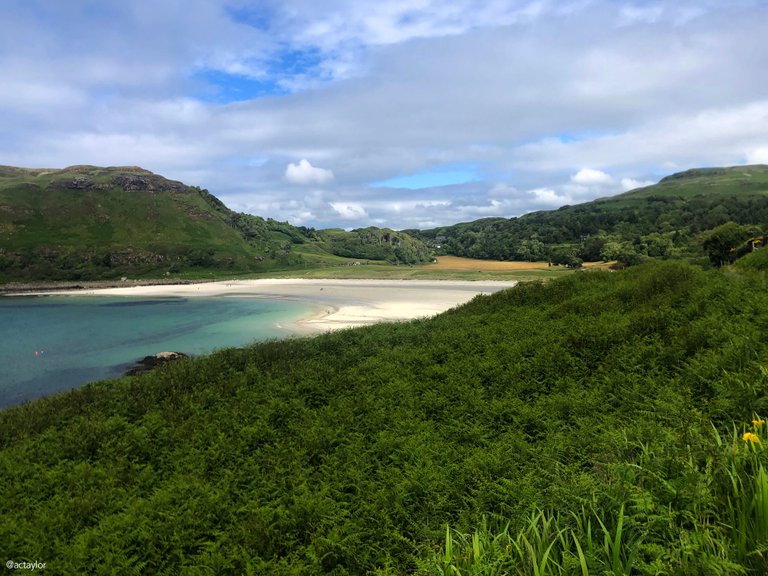
On the way back through, we passed Eas Fors: on the Dervaid to Fionnphort road. I found out later that the ‘Eas Fors Waterfall’ place name is tautological as all three words are synonymous. According to MullWeb, “This often occurs when a name from one language is imported into another and a standard descriptor is added on from the second language. Eas is Gaelic for waterfall, Fors is Norse for waterfall so it could be said that Eas Fors Waterfall is labouring the point slightly! Series of cataracts tumbling down on either side of the road.” Easily accessible. There’s a path going down the side to the bring where the river plunges into the river into the sea.
From here we took a windy road all the way down Grasspoint Pier - for no other reason than to see as much as we could with the limited time we had. It was a pretty tranquil spot, with Old Ferry House & Archie's Cottage being the sole residence there. Great for seal spotting, otters… various seabirds. Additionally, its historical significance as an old ferry terminal and its scenic walking routes make it quite charming.
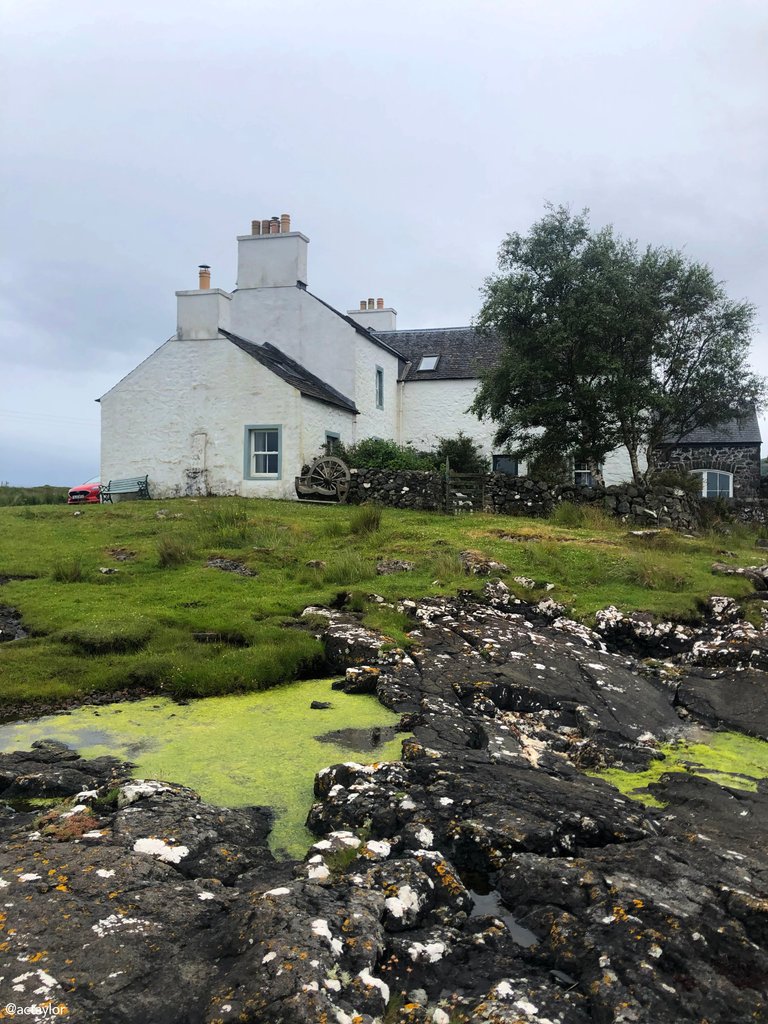
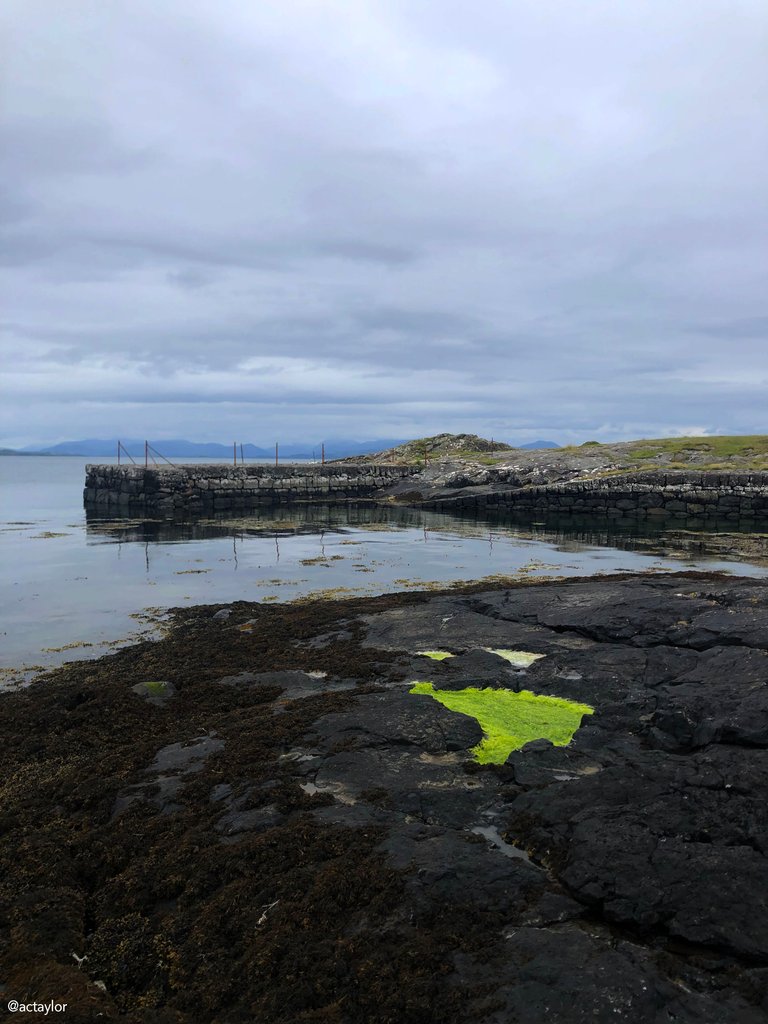
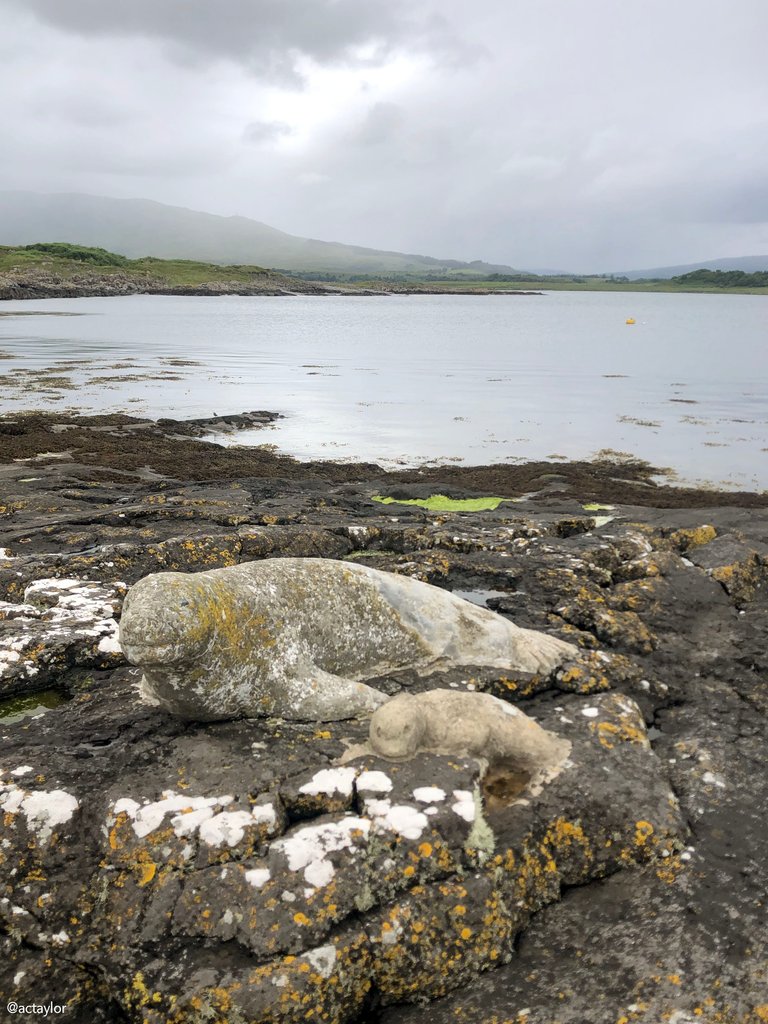
Finally, Duart Castle. The 13th-century ancestral seat of Clan Maclean with its dramatic setting on a coastal tip of Mull. It is home to Sir Lachlan and Lady Maclean. If you want a laugh, and a good indication of the Scottish modesty (and humour), we actually crossed paths with Sir Lachlan after exiting the castle. We’d left just before a large tour group from Spain came through. The Chief of Clan Maclean took us quite by surprise by stopping us on the path to the shop and congratulating us on visiting the grounds before the Spanish invasion.
Quite a few modifications over the centuries at Duart Castle as methods of defence grew in sophistication. But with walls as thick as a truck and the sheer isolation of the place must have doomed any prospect of an attack from the outset. As Irvine notes in his book, “Now a happier, homelier place, the only attacking that gets done these days is on scones and cake in the superior tearoom”.
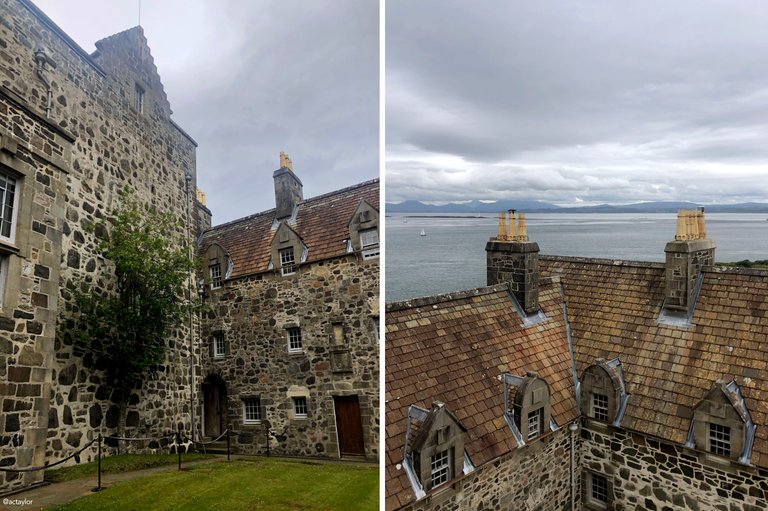
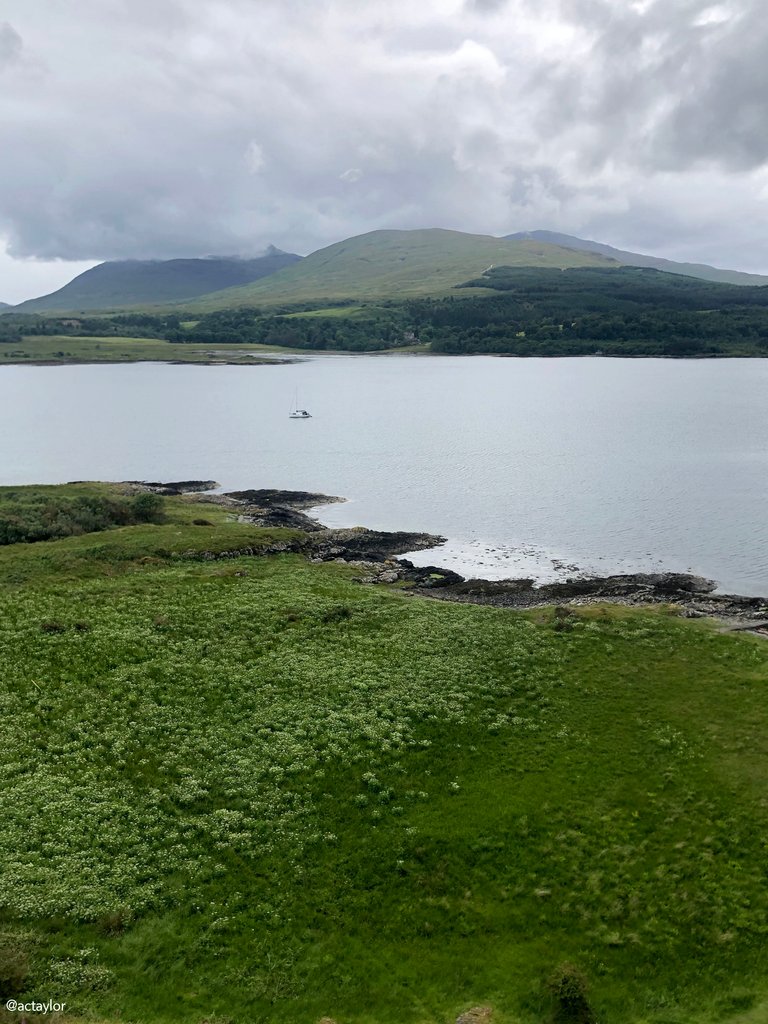
Tbc.
(I'm rather regretting stating this would be a three-post endeavour...)
Disclaimer
Blogger: @actaylor
Photographs: unless otherwise noted, all images were taken by me or mum with an iPhone 8 and an iPhone 14
Hi @actaylor,
Thank you for participating in the #teamuk curated tag. We have upvoted your quality content.
For more information visit our discord https://discord.gg/8CVx2Am
Congratulations, your post has been added to WorldMapPin! 🎉
Did you know you have your own profile map?
And every post has their own map too!
Want to have your post on the map too?